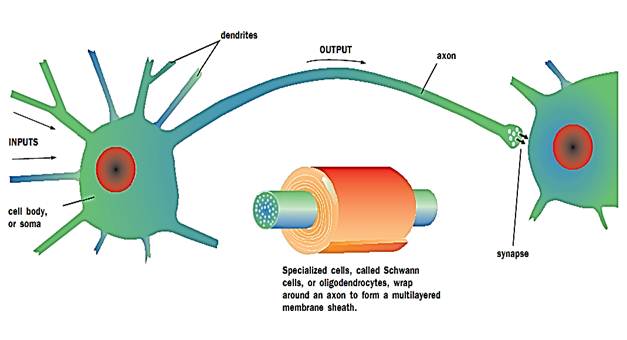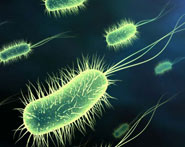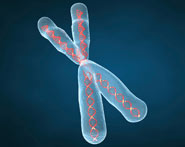


 النبات
النبات
 الحيوان
الحيوان
 الأحياء المجهرية
الأحياء المجهرية
 علم الأمراض
علم الأمراض
 التقانة الإحيائية
التقانة الإحيائية
 التقنية الحيوية المكروبية
التقنية الحيوية المكروبية
 التقنية الحياتية النانوية
التقنية الحياتية النانوية
 علم الأجنة
علم الأجنة
 الأحياء الجزيئي
الأحياء الجزيئي
 علم وظائف الأعضاء
علم وظائف الأعضاء
 الغدد
الغدد
 المضادات الحيوية
المضادات الحيوية|
Read More
Date: 30-10-2015
Date: 22-10-2015
Date: 29-1-2021
|
Nervous Systems
The nervous system is a network of nerve cells and, in most animals, a brain. In vertebrates, it also includes a spinal cord. The primary cell type found in the nervous system is the neuron, which has a cell body, containing the nucleus, and long extensions to carry information from one part of the body to another.
The nervous system has two primary functions that are critical in maintaining the life of the organism. First, sensory receptors allow the organism to monitor its external environment and detect changes that occur (for example, an increase in temperature). The nervous system then activates structures such as muscles and glands, which permit the organism to respond appropriately to the environmental changes (moving out of the sun or activating sweat glands). Second, the nervous system also monitors the organism’s internal environment, controlling heart rate so that enough blood is delivered to organs, or measuring nutrient levels to signal when an organism needs to obtain food.
While all nervous systems carry out these basic functions, the structure and complexity of the nervous system varies tremendously in different organisms. In vertebrates, it is divided into the central nervous system (CNS), which contains the brain and spinal cord, and the peripheral nervous system (PNS), which is composed of the nerves that carry information to and from the CNS. Invertebrate nervous systems may or may not have distinct peripheral and central regions, but communication with and response to the environment still occurs. Overall, invertebrate systems are much less complex. A vertebrate nervous system may contain a trillion neurons, whereas an invertebrate may have as few as 305.

Neurons relay messages by accepting inputs at the dendrite and cell body, passing waves of electrochemical activity down the axon, and releasing chemical neurotransmitters from the axon to the next neuron at the synapse.
Invertebrate Nervous Systems
Although the invertebrate nervous system is usually much simpler than the nervous systems found in vertebrates, there is still a broad range in complexity depending on the type of invertebrate.
The simplest type of nervous system is found in hydras and jellyfish (cnidarians) and is referred to as a “nerve net.” Nerve nets do not have distinct central or peripheral regions, and lack anything that resembles a brain. Instead, the scattered nerve cells form loose networks in each cell layer of the body wall. Some of these neurons carry information from sensory organs that detect touch, light, or other changes in the environment. These neurons in turn contact neurons that control movement of the organism, such as swimming.
Unlike the hydras and jellyfish, invertebrates such as sea stars (echino- derms) display some centralized organization of the nervous system. A ring of neurons is located in the center of the sea star, and simple bundles of neurons called radial nerves extend from the ring to the tip of each arm. In each arm, extensions of the radial nerves form nerve nets as in the jellyfish. This arrangement permits coordinated movement of each arm and the tube feet located on the surface of the arm.
A distinct separation of peripheral and central nervous systems is found in invertebrates such as worms, insects, and mollusks, like the squid. Neuron cell bodies are grouped into clusters called ganglia, which are usually located along the animal’s midline. The peripheral component of the nervous system is formed by the extensions of the cells in these ganglia; some carry sensory information from the environment to the ganglia, while others carry signals from the ganglia to produce a response (such as movement). This type of organization permits segmentation, in which each ganglion responds to and controls an individual segment of the body. To coordinate the segments, these ganglia are connected to each other in a chainlike fashion by a nerve cord, which is a bundle of neurons that runs the length of the animal. Some organisms have more than one nerve cord connected by transverse nerves, resembling a ladder.

The nerve signal can travel in both directions in the hydra (a), a cnidarian. A planarian (b) has two nerve cords and two nerve cords and two clusters of nerve cell bodies at its anterior end. In annelids, such as the earthworm (c), two cords are fused and run down the ventral surface of the body. Arthropods such as the crayfish (d) also have a double ventral nerve, in addition to clusters of nerve cells in the area of the head.
In many invertebrates, the nerve cord is enlarged at the anterior (or head) end of the organism. This enlargement can be considered a primitive brain, and together with the nerve cord comprises the central nervous system. Without any type of brain, the coordination between different segments of the organism is limited at best, and the nervous system primarily produces simple reflexive movements. The presence of a brain allows the organism to receive a wide array of information from the environment, analyze it, and generate a coordinated and complex response. For example, the large brain of a squid enables it to process visual information and rapidly generate coordinated responses to capture prey. In fact, this invertebrate nervous system is so specialized, it closely resembles some vertebrate nervous systems.
Vertebrate Nervous Systems
Many of the features observed in more complex invertebrate nervous systems are also present in vertebrates. All vertebrates have a distinct central component that consists of a brain and spinal cord, as well as peripheral structures such as ganglia and nerves. The primary difference from invertebrates is in the number of neurons and the size of nervous system structures. However, just as variety exists among the nervous systems of the invertebrates, there are also diverse levels of complexity from one type of vertebrate nervous system to another.
Regardless of complexity, vertebrate brains all contain three regions: the hindbrain, midbrain, and forebrain. The hindbrain is located at the junction of the brain and spinal cord, and is dedicated to coordination of motor (movement) reflexes and regulation of autonomic processes such as blood pressure and heart rate. An extension of the hindbrain called the cerebellum assists in coordinating motor movement in response to sensory input. The midbrain is concerned with visual processing and some motor control. The forebrain (the region closest to the anterior end of the organism) shows the most variability among vertebrates. It can be divided into two distinct regions. The telencephalon is concerned with associative activity, that is, combining or integrating all incoming sensory information and directing an appropriate response. The diencephalon contains the thalamus and hypothalamus, regions important in processing sensory input and autonomic responses, respectively. The size of these regions varies depending on the vertebrate class.
The spinal cord is similar to the invertebrate nerve cord, but is usually enclosed in a protective column of vertebrae (with the exception of the most primitive vertebrates, the lampreys and hagfishes). Information is carried to and from the brain and spinal cord by the peripheral nervous system, which contains ganglia located adjacent to the spinal cord. Spinal nerves enter and exit the spinal cord to carry information to and from the body; cranial nerves carry similar information about the head directly into the brain.
Variety in Vertebrate Brains
In primitive vertebrates such as fish, the hindbrain is the largest of the three regions. The cerebellum is relatively well developed for swimming and balance, although not in the lampreys and hagfishes. Fish have a small midbrain (just above the hindbrain) for the processing of visual information, and a small forebrain primarily concerned with the sense of smell (olfaction).
The hindbrain is more enlarged in amphibians compared to fish, but the cerebellum is often reduced in size, which reflects the relatively simple locomotion of amphibians. The forebrain is still small and functions primarily in olfaction.
In reptiles and birds, the size of the cerebellum is increased over amphibians, reaching massive proportions in birds where it regulates the complex muscle activity and spatial coordination needed for flying. The midbrain is enlarged as well, which permits interpretation of more complex visual images. This is particularly true of birds, which also have relatively large eyes. In addition, the sense of hearing becomes more developed, and, beginning with reptiles, the midbrain shows a distinct region dedicated to auditory processing. Reptiles and birds also possess forebrain regions that are much larger than those of more primitive vertebrates; the more complex motor skills and sensory input require a larger telencephalon to process input and coordinate responses. The regions devoted to the sense of smell diminish in size, especially in most birds, which have a very poor sense of smell.
In mammals, including humans, the most striking change is in the size of the cerebellum (again for more complex movements) and the telencephalon, which may be so large that it covers the diencephalon, midbrain, and part of the cerebellum. As specialization of the telencephalon increases, the increased size is correlated with the appearance of convolutions or folds in the surface. This specialization reaches its highest level in humans; the highly wrinkled cerebral cortex completely covers all but the cerebellum in humans. In addition to integrating all types of sensory information and coordinating voluntary movement, all cognitive functions (speech, math, learning, memory) are located here as well.
References
Campbell, Neil A., Jane B. Reece, and Lawrence G. Mitchell. Biology, 5th ed. New York: Benjamin Cummings, 1999.
Kent, George C., and Robert K. Carr. Comparative Anatomy of the Vertebrates, 9th ed. New York: McGraw-Hill, 2001.
Linzey, Donald. Vertebrate Biology. Boston: McGraw-Hill, 2001.



|
|
|
|
دراسة يابانية لتقليل مخاطر أمراض المواليد منخفضي الوزن
|
|
|
|
|
|
|
اكتشاف أكبر مرجان في العالم قبالة سواحل جزر سليمان
|
|
|
|
|
|
|
اتحاد كليات الطب الملكية البريطانية يشيد بالمستوى العلمي لطلبة جامعة العميد وبيئتها التعليمية
|
|
|